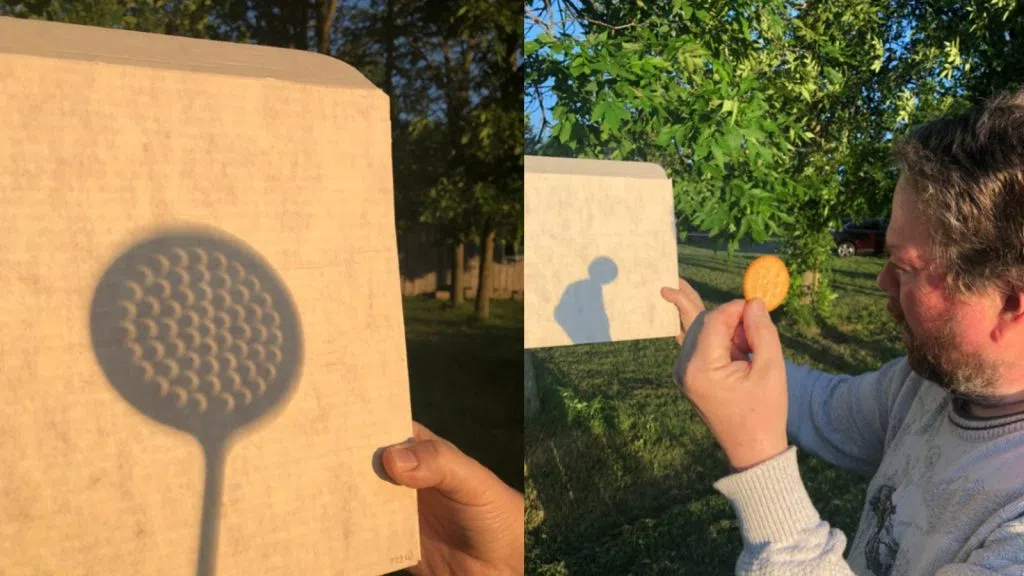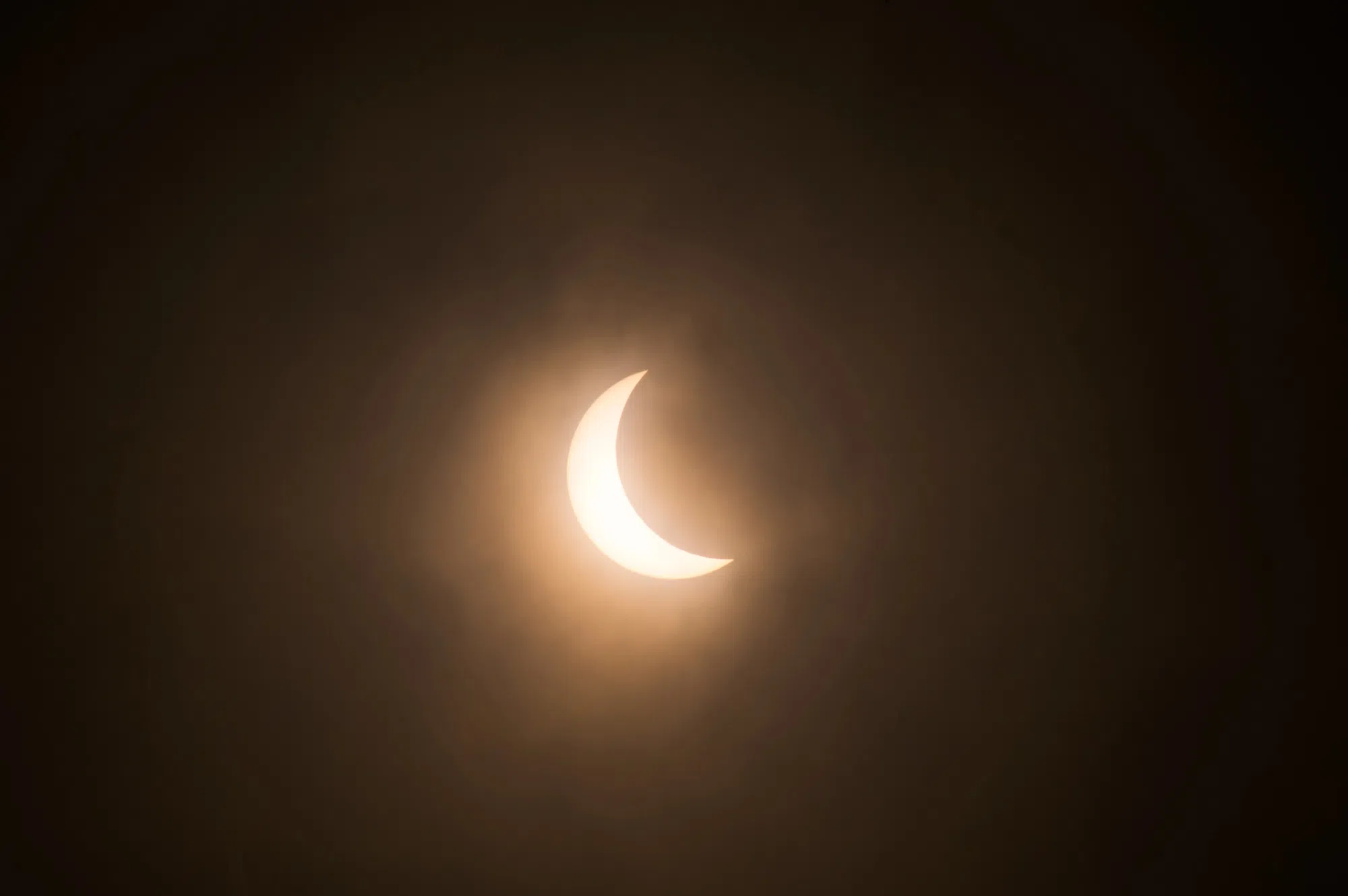Atlantic Canadians will have the opportunity to witness a rare celestial event this Saturday morning, March 29—a partial solar eclipse.
The event will begin below the horizon at 6:27 a.m. and become visible as the sun rises at 7:09 a.m.
It will peak at 84 per cent coverage at 7:18 a.m. and conclude at 8:13 a.m., according to The Backyard Astronomer, Gary Boyle.
Boyle emphasized the importance of safety when viewing the event, warning that even partial sunlight can cause severe eye damage.
“Never look at the sun without approved protection,” he said.
Boyle added that the Solar glasses from last year’s total eclipse are safe to reuse for this event.
He also suggests trying creative projection techniques, such as holding a colander, Ritz cracker, or Swiss cheese over a piece of paper or a wall, to project the sun’s crescent image safely.

Boyle explained this eclipse is unique because it occurs at sunrise. He adds that colder morning conditions may provide a sharper image of the partially covered sun.
For those capturing the spectacle on camera, he recommends using proper solar filters to protect their equipment.
While this partial eclipse won’t bring the dramatic darkness of a total eclipse, it will still be a visually striking event.
“It will be noticeable, especially as the sun rises—a stunning sight,” Boyle said.
As people prepare to enjoy Saturday’s event, Boyle reminds drivers to pull over safely before stopping to view the eclipse.
Boyle, who is passionate about astronomy education, encourages anyone with questions about the eclipse to reach out through his website, Wonders of Astronomy.
He frequently shares tips, insights, and photos from past celestial events to help viewers fully appreciate these rare occurrences.





